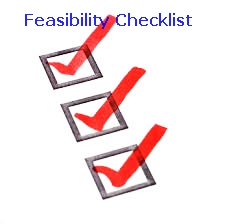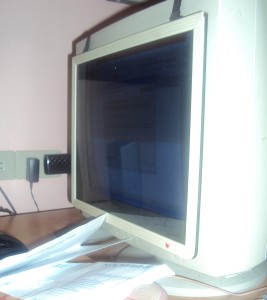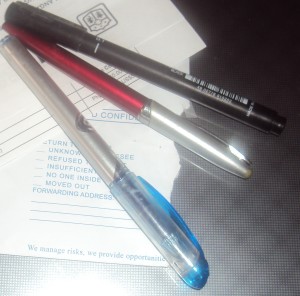Introduction
Pico hydro is a term used to describe the smallest systems, covering hydro electric power generation under 5kw. Depending on its size, a Pico hydro power system may provide a small, remote community with adequate electricity to power light bulbs, radios, and televisions, among other appliances. It was given the name “Pico” by Nigel Smith because it needs some different ways of thinking to micro, mini and larger hydro power There are thousands of site where people have a source of falling water but do not have electricity. For there rural communities in Bataan, Pico hydro is the lowest technology for generating electricity. Lighting from these sources is cheaper than using kerosene lamps, and safer too.
1.1 Load Profile
1.1.1 Location/accessibility
The Pico hydro is located in Maluya Central Balanga City, Bataan. The barangay is accessible by one main dirt road approximately 30 minutes from the main road. This proposed site for pico hydro project is easily access through any transportation vehicle. The climate is generally hot and wet with an average yearly temperature of 29 degree Celcius. The summer dry season occurs from January to April.
1.1.2 Water Resource
There is one canal in Maluya Central which providing irrigation for rice cultivation. This canal generally runs dry during the summer due to irrigation and lower rainfall. Although rainfall is plentiful during wet season and the canal is primarily use for rice paddies.
1.1.3 Electricity Supply
The ba rangay currently has access tp grid electricity provided by Peninsula Electric Cooperative (PENELCO) where the local electricity rate is 9 pesos/kWh plus 12% tax and 5 peso/month charge.
rangay currently has access tp grid electricity provided by Peninsula Electric Cooperative (PENELCO) where the local electricity rate is 9 pesos/kWh plus 12% tax and 5 peso/month charge.
The availability of power can be intermittent brown outs, ranging from a few minutes to several hours, being common. In addition, tropical storms and typhoons cause power outages lasting up to several days or week in extreme cases. Thereafter, intermittency in local electricity in the local electrical supply would prove to be detrimental to the consumer of Maluya.
Fifty percent of households in Maluya are electrified ad from 10 to 20 households in the said place are un-electrified (50%) Small number of household are available in this place because of the fact that the place is new to the public and the road is not yet constructed. The life of the residence here s considered to be below the poverty threshold. As is well known, most villages that are un-electrified are also whom to people who are poverty stricken and multi dimensionally deprived. Un-electrified households primarily used candles and kerosene lanterns for light, with some using rechargeable car batteries for lighting, televisions, or radios. The local rate for charging batteries is 50 pesos a fairly significant amount for many families whose income are just enough and limited for their basic needs. Therefore, pico hydro project are proposing to offer battery charging, which could help for local community to reduce their daily expenses. In addition, it will provide a small revenue stream to help pay for routine maintenance of the Pico hydro system.
1.2 Social Economic Profile
1.2.1 Local Economy
Jobs are very difficult to come by Maluya, resulting in an unemployment rate of even lower. Families are considered to below poverty threshold where their limited economy exists based around agriculture including rice, root crops, and fruits. Fishing is also common among the local population. An agricultural laborer can expect to make around 100 pesos a day budget enough to support the needs of their family. One household are manufacturing small amount of craft work, making income but not enough for their needs.
1.3 Rationale
Hydropower, hydrokinetic power or water power that is derived from the force or energy of falling water, which may be harnessed for useful purposes. Since ancient times, hydropower has been used for irrigation and the operation of various mechanical devices, such as watermills, sawmills, textile mills, dock cranes, and domestic lifts. Since the early 20th century, the term is used almost exclusively in conjunction with the modern development of hydro-electric power, the energy of which could be transmitted considerable distance between where it was created to where it was consumed.
Another previous method used to transmit energy has employed a trompe, which produces compressed air from falling water, that could then be piped to power other machinery at a distance from the energy source.
Water’s power is manifested in hydrology, by the forces of water on the riverbed ad banks of a river. When a river is in flood, it is at its most powerful, and moves the greatest amount of sediment. This higher force results in the removal of sediment and other material from the riverbed and banks of the river, locally causing erosion, transport and, with lower flow, sedimentation downstream.
In hydrology, hydropower is manifested in the force of the water on the riverbed banks of a river. It is particularly powerful when the river is in flood. The force of the water results in the removal of sediment and other materials from the riverbed and the banks of the river, causing erosion and other alterations. This section explains how to select and install Pico hydro system for run of river location in Maluya. Many aspect of the implementation methods described however, are common also to other design including those suited to low head sites and to those which benefits individual consumers rather than small communities.
In starting up in the Pico hydro business or starting a programmed of community pico hydro is important to carefully select the first scheme as this will act as a focus for future interest. The chosen location should be accessible to you and to the customer/funder to make it easy for future business. The optimum site for the pico turbine system in a social application context should have the condition:
Site Location
Pico hydro power generate a limited power, because of that, is oriented to reduced applications as small grid or individual used. According to this, to avoid high grid expenses and power losses, the site should not be too far end users As a standard, for 1kW of power, the distance should not be more than 2 km.
Flow
The flow should be enough throughout a year, extreme flows can affect to the system performance, and the excess flow must be controlled. For measurement of the flow, it should, at least, be done twice a year, during the lowest season (January – April) and also in the highest season (end of September – beginning of October).
Contribution from community
Apart from the suitable technical conditions, is recommendable that community can’t contribute to the project with labors, local material available in the area such as power poles, aggregate sand and gravel) etc. and also people interested in the formed as technicians to assure the continuity of the project.
The impact of the pilots on end user beneficiaries has been carefully considered in the project. The benefits include an increase in the quality of life, with better lighting system enabling community activities during the evenings. The beneficiaries has out that fuel saving were made and there was as increase in the productive output as well as increased opportunities for educational and social activities.
1.4 Statement of the Problem
Due to the unavailability of the power source to number of small communities in Maluya Central, Balanga City, Bataan, most of its residents suffer and experience continues used of kerosene lamps and candles emitting CO2 that may resulting to a fire and also to a low level performance, unprogressive community, uncomfortable lifestyle and inability of doing things as convenient, easy and effective. This Pico hydro generation power project enable to supply electricity to the consumer of Maluya Central. It provides technical data and procedural guidance for the systematic of the viability of potential small hydro power addition and focuses upon the concepts, technology, economic and financial issues to these additions.
1.5 General Objectives
To develop a pico hydro electric generator system designed for run of river as economic source of electrical energy in Maluya, Central, Balanga City, Bataan
Specific Objectives
- To adopt pico hydro technology as a source of transmitting electrical energy in Maluya Central, Balanga City, Bataan
- To install transmission system from pico hydro to a near households
- To provide effective and convenient energy in low cost
- To maximize the usage of water
1.6 Significance of the study
The impact of this study to the consumer of Maluya includes an increase in the quality of life, with the better lighting system enabling community activities during the evening and opportunities for educational and social activities There will be fuel savings and unused of kerosene lamps and candles emitting CO2 which is the primary cause of fire.
To the beneficiaries, the Pico hydro system will be a very big help since it is a renewable kind and is very convenient and cheap. Also to the environment, it does not produced carbon emissions and will definitely reduced global warming in a little way. With the generated electric power, the project aims to contribute a sustainable development in this rural village through improved lighting for household/community work and school assignments, information/entertainment by radio and television, communication access and small livelihood opportunities.
1.7 Scope and Delimitations
This study focuses on the use of renewable energy through the flow of water in a river of Maluya Central, Balanga City, Bataan. One of the factors to be considered is the flow of water since it is the driving force to make the turbine move. As the study comes along, we concluded that the flow of water in Maluya has an electric potential to produced electrical energy. It measures 200 watts and can now supply one household. We also consider the generator and the turbine. The turbine is required to drive with a certain speed while the generator should be at a certain height on top of the turbine for safety reasons and efficiency. On rainy seasons, the water may rise and the flow could be treacherous to the system. However, with the used of penstock this could prevent damage to the system.
Detailed hydrological data for the area is hard to come by. The flow rate of the stream was determined by measuring the cross sectional area of the stream along with the surface velocity of the water using the float method. This method is prone to some error, however the actual design flow is a fraction of the total stream flow measured during dry season and thus should be available year round. Sufficient care was taken to ensure the measurement were as accurate as possible and suitable for this feasibility study.
By:
Jerome dela Cruz
Kenneth Aquino
Wilgem Regino Crespo
John Andrew Molino
Rosauro J. Fernando Jr.






